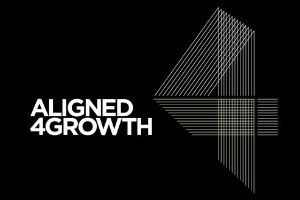Businesses that achieve successful next level growth have common characteristics. They understand that growth is change and they need to have aligned strategies, capabilities and systems to manage the growth while reducing risks of failure. They ensure their business has the following fundamentals in place for sustainable next-level growth:
Vision: It should reflect the identity of the company’s meaning for existence to attract ideal customers and the right employees. As the company adds key employees and grows, the Vision is essential to provide synergy and agreement among key members. Growth is change, and key employees need to have synergy in pulling together to next-level growth.
Purpose: You control the emotion your product or service is appealing to. A business purpose describes the reason, or purpose, that a company was initially founded. It describes what makes a business unique, as well as what the business plans to do. Having a strong sense of purpose can define that culture. It gives people a clear sense of what their contribution to the company means, and also how they should do things every day. If everyone in the business is aligned to a common purpose, they can understand the need for transformation – and this empowers them to embrace it, rather than fear it. Ultimately, a shared purpose should create strategic clarity. It allows you to focus on what matters – and in the process boost productivity, performance, loyalty and the bottom line.
Apple is an example of this is. Its “Think different” promise, created in 1997 and remains relevant today, highlighting the benefits of buying an Apple product. It’s not just a device, it promises authenticity, and to be a mode of self-expression. It’s no coincidence Apple is one of the most recognised and valuable brands in the world.
Leadership: Effective Leadership is crucial to achieving success in growth. In the book “Good to Great”, Jim Collins describes an Effective Leader as one who “catalyzes commitment to and vigorous pursuit of a clear and compelling vision, stimulating higher performance standards”. Leaders who hire the “right people” while developing a culture of discipline and teamwork are most effective through empowering their staff. Collins found good to great leaders “first got the right people on the bus, the wrong people off the bus, and the right people in the right seats – and then they figured out where to drive it.”
Manage Cost and Cash Flow: Cost and Strategy are inseparable because of investment, good or bad, matters. Unnecessary cost is your enemy, not just because it consumes profit, fuels incoherence and prevents you from focusing on your capabilities systems and way to play. Companies need to align their cost structure, developing a clear whole of organisation cost plan, invest in sustainable and differentiating capabilities funded by the improved cost structure.
Business Systems: Owners who have set up a business to work for them and not them working for the business have established effective business systems and processes and measure defined and aligned objectives and key results (OKR’s). Owners and leaders can then proactively manage the business for next-level growth. Whether it is in areas of Business Structure, Risk, Operations, Finance, Marketing, Sales, Customer Service, and others, they have systems that allow them to work on the business and not in it.
Growing a business is an evolutionary process that requires continual strategy development for short term and long terms objectives, learning, continuous improvement, monitoring and management. As companies grow and evolve the capabilities, systems, processes and solutions that worked at one level most likely will need adapting or replacement at the next level.
Marketing and Sales: Successful business owners focus on a deep understanding of the essential needs of their target customers and continuously monitor and pivot their products/services to answer these needs. Marketing campaigns and sales programs strategically reflect the BENEFITS of their products/services to their clients to drive sales. “Approach each customer with the idea of helping him or her solve a problem or achieve and goal, not of selling a product or service”, Brian Tracy.
Does your business have a purpose, systems and process, management strategies to allow and support sustainable next-level growth?


Recent Comments